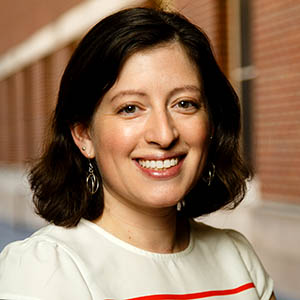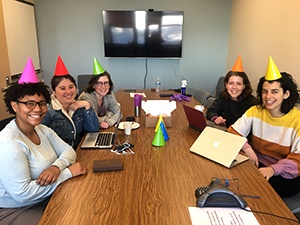In the final throes of the 2020 election and with open enrollment for the Affordable Care Act health insurance marketplace beginning — albeit with little fanfare or attention — on November 1, it’s worth looking back to the last time health policy messaging in advertising was broadcast in high volumes. 2018 was a year of intense political discussion, campaigning, and commercials that frequently focused on the state of the Affordable Care Act (ACA) and healthcare in the United States.

“Commentators called it ‘the health policy election’ because of the unprecedented amount of attention paid to the subject during the elections,” says Associate Professor Sarah Gollust. “There was an incredible amount of messaging and political activity with the so-called ‘blue wave’ of new Democratic candidates coming into office with health policy platforms and the Republicans who were campaigning heavily on the topic as well.”
Gollust researches how health issues are communicated in the media and the ways those messages influence public opinion and policy making. Her interest and the midterm elections sparked an idea to undertake a project to systematically analyze the content of 2018 political and product advertisements regarding health insurance and policy. Gollust launched the research, funded by the Russell Sage Foundation, in collaboration with Erika Franklin Fowler, a long-time collaborator and the co-lead of the Wesleyan Media Project, an initiative that conducts real-time analysis of advertising and news messaging related to politics.
Papers from the research will describe the content of these messages — showing, for instance, how advertisers represented the types of beneficiaries eligible for health insurance, and the marketing appeals used in Spanish vs. English-language ads. The researchers will also link the data on advertising volume and variation to other sources of data to examine how the airing of advertisements related to enrollment-related outcomes and public opinion.
Learning by doing to make data feel real
Gollust believed that the project would make a great learning experience for students, so with this in mind, she hired students to staff her research team and guided them in every step of conducting the study.
“I remember when I was a graduate student and how analyzing data didn’t feel real until I was working with data that I had helped collect,” says Gollust. “Students can develop a lot of confidence working with data sets when it’s for something that they know and care about.”

Gollust assembled a team made up of Health Services Research, Policy & Administration PhD students Margaret Tait, Cynthia Pando, and Cydney McGuire along with Public Health Administration & Policy master’s student Sarah Perez-Sanz (MPH ’20).
“I was excited about the project because I thought it was a really unique opportunity to learn about health insurance marketing and build my knowledge of health policy along with it,” says Tait.
The group began meeting in summer 2019 and watched hundreds of political and health insurance advertisements that were collected by Wesleyan. They used the sessions to figure out what exactly to identify, count and characterize in the commercials, and then created a study “instrument” — a specific list of data to gather and a well-thought-out method for collecting it.
The researchers used the instrument to collect information on important advertising elements, such as key messages, references to Obamacare, and who was pictured in the commercials. The team recently wrapped up analyzing the data and is now in the process of writing papers and submitting them to research journals for publishing.
“The most rewarding part was we had to work really hard to learn how to set everything up, do it, and analyze the results,” says Perez-Sanz.
The team is already sharing some of the project’s findings, including Pando and Tait who recently presented research posters they led related to the project during AcademyHealth’s Annual Research Meeting in August and the Interdisciplinary Association for Population Health Sciences in October.
A long look at short-term insurance
Perez-Sanz and Tait also went a step further with the project by taking a deeper look at advertising for short-term, limited-duration health insurance plans and healthcare sharing ministries. The plans lack the range of required health services and protections for pre-existing conditions that ACA-compliant plans do.
“These plans are more likely to have high-deductibles, cover fewer services, and some aren’t even technically insurance plans,” says Perez-Sanz.
The students worry that the potentially confusing or deceitful marketing of such plans could harm the millions of Americans grappling with job loss and searching for affordable health insurance coverage during the COVID-19 pandemic.
“There hasn’t been a lot of research into the marketing of these kinds of products, so, there’s a real imperative to do it in order to protect consumers,” says Tait. “The ads are really tricky and look and sound like commercials for regular insurance policies, leaving people to believe that they are.”
In response, Perez-Sanz and Tait analyzed the commercials and wrote a blog post warning of the pitfalls of the plans. The blog also offers tips on how to identify plans offering comprehensive, ACA-compliant insurance coverage. These tips are of particular interest given the start of the open enrollment period for people seeking health insurance for 2021, which extends from November 1 to December 15, 2020.
